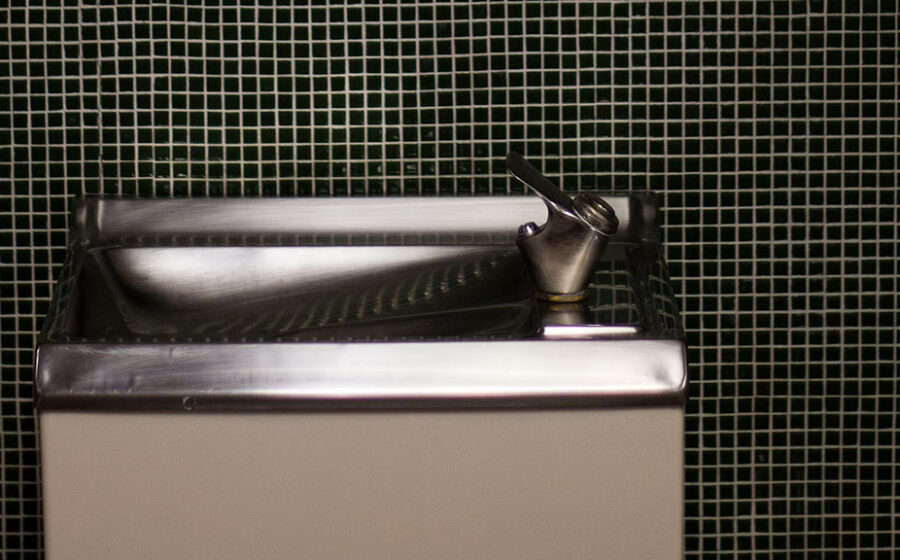(Photo: Quin Stevenson.)
[T]he most important step in designing a filtration solution is determining what’s in your water. Once you know what you’re dealing with—in terms of general hardness and carbonate hardness— you can devise a plan to alter the content of your water. A titration kit from a reputable aquatic supply store can tell you the general hardness and carbonate hardness of your incoming water. If you want to get more specific, the Red Sea’s Reef Foundation Pro Test Kit can give you levels of calcium, magnesium, and carbonate hardness. For regions with hard water, the challenge is to reduce bicarbonate while still retaining desirable metals. In soft water regions, often a carbon block and sediment filter will suffice.
Sediment Filtration ($)
Sediment filtration is used in places where water contains metal oxides that are insoluble in water—such as silicates and aluminates. These insoluble metal oxides are essentially tiny pebbles that need to be removed from water to prevent equipment damage. In locations with high sediment content, filters get used and abused quickly, so they are typically larger in size to promote a longer shelf life. The larger filter size also provides a greater surface area to accommodate a high flow rate.
Bottom line: a low-expense filter to remove dirt.
Carbon Filtration ($)
Carbon filters remove organic molecules, chlorine, and other weakly soluble species from water. These filters capitalize on thermodynamics to pull organic molecules out of water: it takes less energy for organic compounds to stick to the solid carbon than to remain in the water. Carbon filtration is essential in most locations because even a low level of organic molecules in water can significantly affect flavor and smell. Some carbon filters have an added ion exchange mechanism, so be sure to read specs carefully before buying.
Bottom line: a low-expense filter for removing organic molecules that can affect flavor and smell.
Ion Exchange Columns ($$)
Ion exchange columns alter the mineral content of water by passing water through a resin-coated column. For example, a column coated with sodium salt might interact with water heavy in calcium, trading two sodium (Na+) molecules for one calcium (Ca2+) molecule; the resulting water is high in sodium but lower in calcium, reducing the chance of scale formation.
This exchange principle applies to both positively and negatively charged ions. Sophisticated filters can lower bicarbonate concentration by exchanging protons into water, reacting with bicarbonate to yield H2O and CO2 (a gas). These sophisticated filters are favorable for coffee flavor, as a degree of bicarbonate is needed to buffer pH and to neutralize acidic flavors that aren’t desirable. Companies have also manufactured magnesium-calcium exchangers, which leaves the general hardness of water the same, but reduces the risk of scale because of the reduced presence of calcium.
Bottom line: exchange columns can more specifically target minerals and almost always include some H+ in the resin column, working to buffer pH and indirectly targeting bicarbonate concentration. These are good solutions for transforming hard water into desirable coffee water.
Reverse Osmosis ($$$$)
Reverse osmosis systems use a high-pressure membrane to filter out all dissolved components of water. If the system works perfectly, the resulting water is completely deionized. Deionized water isn’t ideal for coffee because it lacks the metals necessary to pull out flavorful compounds, has no buffering ability, and is potentially harmful for equipment (heating this water can result in pH swings that make water corrosive). Unfiltered water is generally mixed in with the deionized water to achieve a level of bicarbonate that’s favorable for the machine and café environment; bicarbonate is targeted over calcium or another mineral because of its buffering abilities—it can mitigate acidity while still pulling in flavor compounds. An ideal bicarbonate concentration is 30 ppm. RO systems use a lot of water in the deionization process, so this filtration option comes with high equipment, space, and energy costs.
Bottom line: RO systems are useful for achieving soft water and addressing serious water issues that pose problems for equipment health, such as high chloride content.
—Ellie Bradley is Fresh Cup‘s associate editor.















